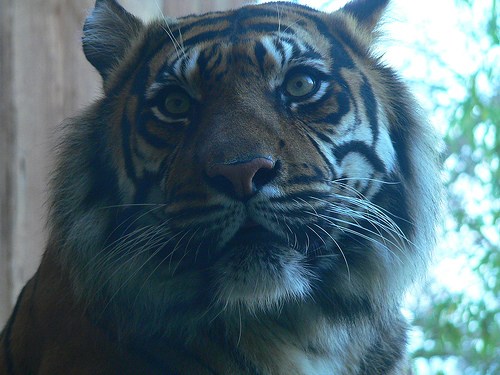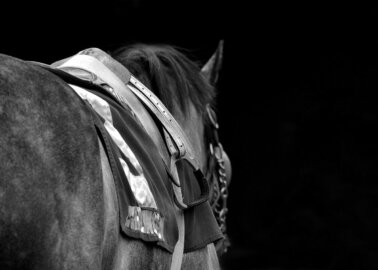London Zoo Allegations Highlight Captive Animals’ Suffering
Letting drunken humans spend a night out in a zoo was never going to be a good idea. The City of Westminster is investigating a series of reported incidents at London Zoo’s “Zoo Lates”, including allegations that visitors stripped off and attempted to enter the penguin pool, poured beer over a tiger and got “touchy feely” with baby penguins.
These idiotic acts aren’t the only reasons why the Zoo Lates are a deeply distressing experience for the animals on display. The noise levels from the crowds are much louder than anything to which most of these animals have ever been exposed. Add to that the increase in smells from the crowds and the alcohol consumption as well as the visual impact of the increase in visitors, and the animals’ stress levels will be greatly elevated.
As an article by our Associate Director Mimi Bekhechi in The Independent this week explains, these allegations are just another example of the zoo industry putting profits above the welfare and needs of animals:
The profound levels of stress, anxiety and agitation that wild animals experience in captivity mean attacks on people occur with staggering regularity. This week alone, a 16-month-old girl was scratched by a lion in a circus in France, a zookeeper was bitten by a tiger in Australia, a woman in the US lost a finger to a lion in a zoo and a boy had his hand ripped off by a tiger in a zoo in Brazil. All these attacks were preventable and utterly predictable. Captive animals are not permitted to engage in normal behaviour, such as running, jumping or hunting. Every facet of their lives is controlled, including when and what they eat, when they sleep and with whom they mate, so is it any wonder that they lash out in frustration? Patrons of what London Zoo actively promotes as “a wild night out” are there to party. Rowdy, drunk humans and captive wild animals make for an even more dangerous combination for all concerned.
With tickets costing up to £35, the zoo claims that Zoo Lates bring in important revenue, generating £800,000 a year to fund its “conservation” work. But if the zoo were truly concerned about protecting animals, any event which posed even the slightest risk to the animals would be cancelled immediately.
Zoos put the “con” in conservation. Why else would they be raising money to keep animals incarcerated as living exhibits instead of asking the public to donate to schemes that would protect them in their native habitats? When, in 2007, London Zoo spent £5.3m on a new gorilla enclosure, Ian Redmond, the chief consultant to the UN Great Apes Survival Partnership, said, “£5m pounds for three gorillas when national parks are seeing that number killed every day for want of some Land Rovers, trained men and anti-poaching patrols. It must be very frustrating for the warden of a national park to see”.
It’s bad enough that the London Zoo’s permanent residents have no way of escaping their day-to-day confinement, but to deliberately encourage and promote events which pose a threat to them defies belief. Everyone who genuinely cares about tigers and all the other individuals held captive inside zoos should recognise these institutions for what they are: profitable prisons that don’t give a monkey’s about the individuals in their “care”.
Once they realise what zoos are really like for the animals imprisoned in them, most people stay away. There are many genuinely rewarding ways to learn about wild animals, without snatching them from the wild, such as watching nature documentaries or becoming an expert about the wildlife in your local area.
Photo: “London Zoo” by S. Pakhrin / CC BY 2.0




